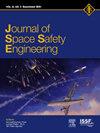Space vehicle reliability assessment for selected medium space powers
IF 1.7
Q3 ENGINEERING, AEROSPACE
引用次数: 0
Abstract
This research examines space launch vehicle (SLV) and satellite reliability trends through a variety of statistical methods such as the first-level Bayesian estimation and the Weibull distribution for France, India, Israel, Japan, and South Korea. Datasets derived from the Seradata database included the following information: launch date, inactive date, launch country, satellite owner country, vehicle family, satellite name, orbit category, satellite status, mass category, event, event date, and event remarks. The first-level Bayesian estimation and success rates were calculated for 538 SLV launches from each country’s first launch date to 31 December 2023. Overall, 51 launches were failures, making up 9.48 % of total launches for the countries analyzed; 57.8 % of launches were sent to low Earth orbit (LEO) while 4.28 % were sent beyond geosynchronous/geostationary orbit (GEO-GSO). Of 18 SLVs analyzed, 6 vehicle families exhibited realized success rates above 90 %. Since 1965, 809 satellites were launched, with a 1.98 % failure rate. The primary cause of failure was due to the satellites, inability to transmit signals, making communication, command, and control unattainable. Ultimately, through Weibull distribution, satellites owned by France, India, Japan, and South Korea showed a decreasing failure rate over time while results from Israeli satellites were inconclusive.
选定中等空间功率的空间飞行器可靠性评估
本研究通过各种统计方法,如一级贝叶斯估计和威布尔分布,对法国、印度、以色列、日本和韩国的空间运载火箭(SLV)和卫星的可靠性趋势进行了研究。来自Seradata数据库的数据集包括以下信息:发射日期、非活动日期、发射国家、卫星所有者国家、运载工具系列、卫星名称、轨道类别、卫星状态、质量类别、事件、事件日期和事件备注。从每个国家的第一次发射日期到2023年12月31日,计算了538次SLV发射的一级贝叶斯估计和成功率。总体而言,51次发射失败,占所分析国家发射总数的9.48%;57.8%的发射被发送到低地球轨道,而4.28%的发射被发送到地球同步/地球静止轨道之外。在分析的18个slv中,6个车型系列的实现成功率超过90%。自1965年以来,共发射了809颗卫星,故障率为1.98%。失败的主要原因是由于卫星无法传输信号,使得通信、指挥和控制无法实现。最终,通过威布尔分布,法国、印度、日本和韩国卫星的故障率随着时间的推移而下降,而以色列卫星的结果尚无定论。
本文章由计算机程序翻译,如有差异,请以英文原文为准。
求助全文
约1分钟内获得全文
求助全文
来源期刊

Journal of Space Safety Engineering
Engineering-Safety, Risk, Reliability and Quality
CiteScore
2.50
自引率
0.00%
发文量
80
 求助内容:
求助内容: 应助结果提醒方式:
应助结果提醒方式:


